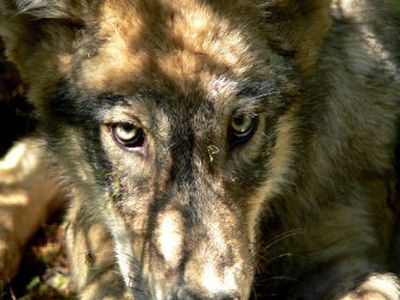Proposal could alter feds’ strategy for wolf tracking

BOISE – A federal plan for handling cattle and sheep predators in designated wilderness areas could breathe new life into a proposal to land helicopters in millions of acres of pristine forest in Idaho for the purpose of tracking gray wolves, environmentalists say.
A proposal before the U.S. Forest Service and the U.S. Department of Agriculture’s Wildlife Services Division would update Forest Service policy to allow as “last resorts,” animal sharp-shooting from helicopters, all-terrain vehicles and poison baiting in protected wilderness areas, Katie Armstrong, a Forest Service spokeswoman, said Monday.
Still, an approval by a regional forester would be required, so the policy change is not a “back door way to open up wilderness areas to motorized vehicles,” she said.
The changes might have implications for an ongoing Forest Service review of the Idaho Department of Fish & Game’s proposal to land helicopters in the 2.4 million-acre Frank Church-River of No Return Wilderness, a rugged swath of mountains and wild rivers in central Idaho.
Earlier this year, state biologists were flying on helicopters for aerial elk population estimates conducted every three to five years. They hoped to use the opportunity to shoot tranquilizer darts at wolves from the air, then briefly touch down to attach tracking collars to animals in the roughly nine packs roaming the wilderness area.
But in January, Intermountain Regional Forester Jack Troyer, based in Ogden, Utah, rebuffed the state agency’s request to fast-track a waiver of the helicopter landing ban.
State officials bemoaned the decision, saying it would trigger a lengthy environmental review and make it harder to estimate how many wolves occupy the remote wilderness.
Environmentalists hailed the decision, but their joy quickly turned to jitters. Jon Marvel, executive director of the pro-wolf Western Watersheds Project in Hailey, Idaho, said the tracking plan now could sail through the federal approval process in the wake of the Forest Service policy shift.